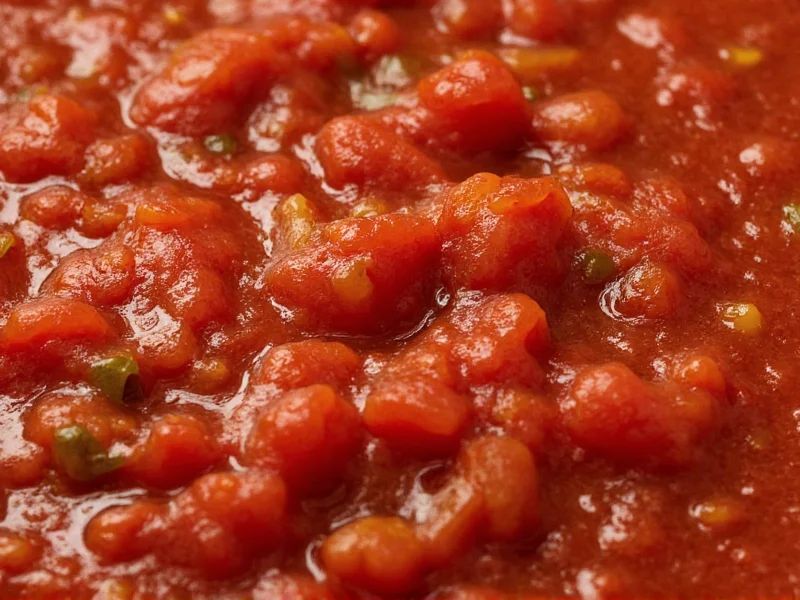When standing in the grocery aisle staring at salsa options, one of the most common questions shoppers face is understanding the heat difference between mild and medium varieties. The straightforward answer is yes—medium salsa consistently delivers more heat than its mild counterpart. But what exactly creates this difference, and how significant is the temperature gap between these two popular heat levels?
Understanding Salsa Heat Levels
Salsa heat primarily comes from capsaicin, the compound found in chili peppers that triggers our sensation of spiciness. The Scoville scale measures this heat, ranging from zero (no heat) to over 2 million units (extremely hot). Most commercial salsas fall between 100-5,000 Scoville units, placing them in the mild to moderately spicy range.
Mild salsa typically uses only bell peppers or very mild chili varieties like poblano peppers, which register between 1,000-2,000 Scoville units. Medium salsa usually incorporates jalapeño peppers, which range from 2,500-8,000 Scoville units, creating that noticeable step up in heat.
Factors That Determine Salsa Heat
Several elements influence whether your salsa lands in the mild or medium category:
| Factor | Mild Salsa | Medium Salsa |
|---|---|---|
| Primary Peppers | Bell peppers, Poblanos | Jalapeños, Serranos (in smaller amounts) |
| Seeds and Membranes | Removed completely | Partially included |
| Additional Heat Sources | None | Occasional dash of hot sauce |
| Typical Scoville Range | 100-1,000 units | 1,000-5,000 units |
Why Heat Levels Vary Between Brands
One important consideration when comparing is medium salsa hotter than mild across different brands is that there's no standardized industry measurement. A medium salsa from one manufacturer might feel milder than another brand's mild version. This inconsistency happens because:
- Each company has its own recipe and heat scale
- Pepper heat varies based on growing conditions and harvest time
- Some brands add vinegar or sugar to counteract heat
- Preparation methods affect capsaicin distribution
When exploring the difference between mild and medium salsa, remember that personal heat tolerance plays a significant role. What feels medium to one person might register as hot to another, especially if you're not accustomed to spicy foods.
Choosing the Right Heat Level for Your Needs
Understanding how spicy is medium salsa compared to mild helps you make better choices for your palate and recipes. Consider these tips:
- For sensitive palates or first-time salsa users, start with mild
- When cooking dishes where salsa is a primary ingredient, medium often provides better flavor balance
- Check ingredient lists for specific peppers used
- Look for "no seeds" labeling if you want the mildest option
- Consider trying sample sizes before buying larger containers
The mild vs medium salsa heat distinction isn't just about spiciness—it affects the overall flavor profile too. Mild salsas showcase more of the tomato and vegetable flavors, while medium versions introduce a pleasant warmth that enhances other ingredients without overwhelming them.
Common Misconceptions About Salsa Heat
Many people believe that all salsas follow the same heat progression, but the understanding salsa heat levels requires recognizing several myths:
- Myth: Medium salsa is twice as hot as mild
Reality: The difference varies significantly by brand and recipe - Myth: Color indicates heat level
Reality: Red and green salsas can both come in mild or medium varieties - Myth: All jalapeño-based salsas are medium
Reality: Jalapeño heat varies, and preparation methods dramatically affect final spiciness
When how to choose salsa heat level becomes important for your specific needs, remember that personal preference matters most. The best approach is to sample different brands and varieties to discover your ideal heat level.
Is medium salsa significantly hotter than mild?
Medium salsa is noticeably hotter than mild, but not overwhelmingly so. The difference is significant enough that sensitive palates will detect it, but most people find medium salsa approachable. Mild salsa typically ranges from 100-1,000 Scoville units, while medium usually falls between 1,000-5,000 units.
What makes medium salsa hotter than mild?
Medium salsa becomes hotter through the use of spicier pepper varieties (like jalapeños instead of bell peppers), inclusion of some seeds and membranes (where capsaicin concentrates), and sometimes additional heat sources like a dash of hot sauce. The specific combination and preparation methods determine the final heat level.
Can mild salsa ever be hotter than medium?
Yes, due to lack of standardization across brands, it's possible for one company's mild salsa to be hotter than another's medium. This happens because each manufacturer has its own recipe and heat scale. Always check ingredient lists and consider trying sample sizes when switching brands.
How can I reduce the heat of medium salsa if it's too spicy?
To reduce medium salsa heat, try mixing it with mild salsa, adding avocado or sour cream, incorporating more tomatoes, or including a small amount of sugar or citrus juice. These ingredients help balance the capsaicin without compromising the salsa's fresh flavor profile.











 浙公网安备
33010002000092号
浙公网安备
33010002000092号 浙B2-20120091-4
浙B2-20120091-4